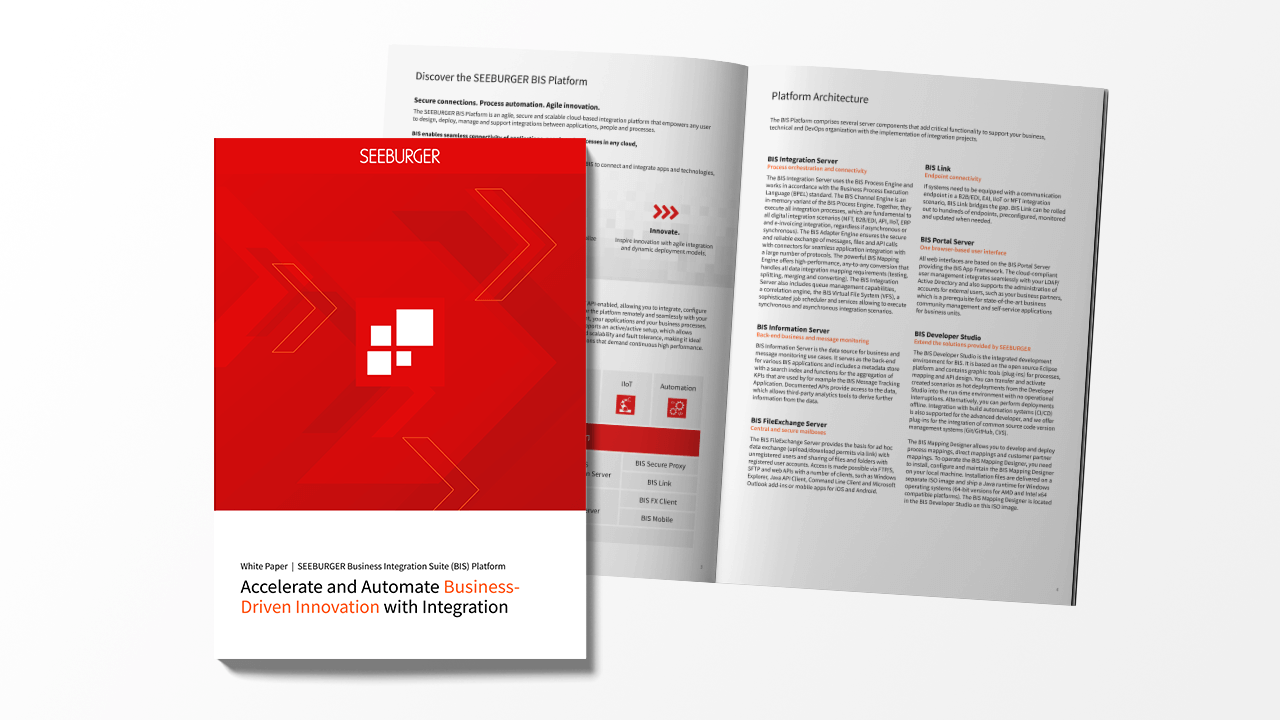
WebEDI – Digital Supplier Integration
What is WebEDI?
WebEDI is a web interface for electronic data interchange (EDI). With WebEDI, companies and their business partners can participate in the EDI process and access delivery data in an Internet browser without the need for their own EDI system. The supplier enters data manually in a web portal, which is made available to the system operator in the same form as with an EDI connection. With WebEDI, companies that already use a classic EDI process can integrate smaller, non-EDI-capable trading partners into their own EDI landscape with little additional effort. Business partners without their own EDI system can still take part in the EDI process and transfer data in machine-readable form for automated processing.
Processes and functional overview of WebEDI

With WebEDI, customers and suppliers can easily exchange business documents over the Internet. Customers connect WebEDI to their classic EDI system and ideally activate it on a B2B platform. Since WebEDI can display business documents in a web format, suppliers can access and download or upload data, e.g. as a CSV file. The supplier is responsible for order monitoring, which means that the supplier must check whether there are any orders from a customer or partner. A complete WebEDI solution can automate this process by informing the supplier about incoming orders and call-offs. In addition to order notification and visualization, WebEDI also generates invoices and other commercial letters, such as delivery notes and order confirmations, directly in the web portal and sends those electronically to the customer in one step.
Launching WebEDI
Three ways of introducing WebEDI in your company for easily exchanging business data with suppliers via the Internet include:
- Run an in-house WebEDI solution for your suppliers
- Receive WebEDI as a service from an IT company
- Connect to an IT service provider’s global marketplace in the public cloud
SEEBURGER assists with the step-by-step introduction of WebEDI, starting with a survey and partner analysis through the planning of the project to the associated campaign. The SEEBURGER WebEDI solution supports all relevant data formats, communication protocols and application interfaces. The supplier enters the data manually into the Supplier Portal while the SEEBURGER BIS Platform provides automated processing of EDI and WebEDI data, including monitoring and compliance checks. You can choose between the configuration of multiple processes or surcharges and discounts at the item and document level.

Properties, uses and advantages of WebEDI
Companies of all industries exchange business data via the web. Supplier integration via WebEDI particularly accelerates the roll-out of ordering processes for small and medium-sized suppliers. In order to map the necessary business processes, the exchange of business data with suppliers requires basic processes, such as incoming orders, shipping notification and invoice, which the supplier can exchange with the customer via the Internet. Suppliers can also maintain order processing and delivery planning and send follow-up documents via one web portal. WebEDI offers the following advantages:
WebEDI enables automotive companies to communicate securely and traceably for fast, transparent and reliable processes with external stakeholders. In the manufacturing industry, WebEDI increases both the integration of suppliers into the company's process flows and the transparency and controllability of business processes. For consumer goods manufacturers and trading companies, WebEDI minimizes the process costs and lead times of daily business data exchange such as orders, delivery notes and invoices. Additionally, the customer's inventory management is optimized by providing sales and inventory reports.









